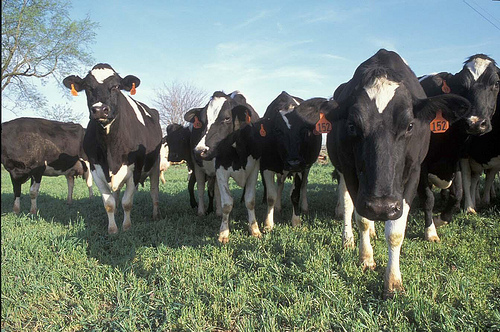International concern is growing over the rising level of atmospheric methane, a greenhouse gas second in influence only to carbon dioxide, and responsible for 25-30% of global warming since the start of the Industrial Revolution. Methane is a naturally occurring trace gas in Earth’s atmosphere that was present at a preindustrial concentration of 700 parts per billion – about 400 times lower than the level of carbon dioxide. Under human influence the atmospheric methane concentration increased fairly steadily from the late 19th century until about 1996, plateaued for about ten years, and then resumed its climb. Recent data from the National Oceanic and Atmospheric Administration shows that the increase in atmospheric methane is no longer steady but rather accelerating, implying an increasing contribution to climate change in the coming years. In June of 2023, the methane level reached 1917 parts per billion, the highest on record, reflecting an astonishing 170% increase over the past 150 years.
Unlike the carbon dioxide level, which is largely determined by well-tracked emissions from the fossil fuel-based energy economy, the reasons for the recent increase in atmospheric methane concentration have been challenging to pinpoint because the gas arises from many diffuse sources. Natural gas is about 98% methane, and while burning it produces carbon dioxide, substantial leakage during oil and gas drilling, pipeline transport and venting from coal mines generates about 20-30% of the total methane emissions each year. The other significant anthropogenic source is agriculture and waste, including landfills, livestock operations and paddy rice cultivation. This contributes up to 40% of methane emissions, while the remaining 30-40% comes from natural sources, especially wetlands. In the past few years, satellite remote sensing and ground-based data have led a number of scientific teams to conclude that the recent sharp growth in methane emissions is coming from the wetlands, especially those located in the tropics. While this might appear to let humans off the hook, the increased wetland emissions are actually a positive feedback from anthropogenic climate change. Tropical wetlands have been expanding as air and water temperatures rise, increasing the habitat for the microorganisms that produce methane and decreasing the solubility of the gas, so that more is emitted into the atmosphere.
The wetlands origin of the methane spike is troubling because there is no effective way to directly stop these emissions from occurring. In time, the positive feedback will lessen as the green energy transition accelerates and Earth’s proper energy balance is slowly restored, but this does little to diminish concerns today that rightly focus on the strength of methane as a greenhouse gas. Over a 20 year time frame, methane is 86-fold more potent than carbon dioxide in trapping the heat emitted by Earth’s surface and atmosphere. Only methane’s still low abundance prevents it from overtaking CO2 as the predominant driver of global warming.
Has the heightened concern about methane led to increased efforts to reduce emissions in the fossil fuel, waste and agriculture sectors, where abatement technologies are available at reasonable cost? The brief answer is yes, although many of the policies have either just been enacted or are still being rolled out, so their effectiveness has yet to be tested. The international community has recognized the importance of methane for some time, but many countries have been slow to emphasize methane mitigation as part of their Nationally Determined Contributions under the UN-sponsored 2015 Paris climate agreement. To address this, in 2021 the US and European Union initiated a Global Methane Pledge that seeks a 30% reduction in anthropogenic methane emissions by 2030. Last week, at a symposium on methane mitigation sponsored by the National Academy of Sciences (NAS), a top adviser to US climate envoy John Kerry noted that the new pledge includes over 150 countries responsible for half of global emissions, and has substantially increased the awareness and enthusiasm for mitigation efforts. Nonetheless, this approach has significant limits: it is voluntary, and features only an overall global target, not specific reductions to be achieved by individual countries. And some of the largest methane emitters, including China, Russia and India, have so far declined to participate.
Fortunately, the US has also been doing a great deal on the domestic side. Under President Biden it is rapidly stepping up policies to control methane emissions from the energy sector, building on initiatives first put in place during the last few years of the Obama administration. A final Environmental Protection Agency rule aimed at cutting methane emissions from the oil and gas supply chain is presently under White House review, and will cover emissions from both new and highly polluting older facilities established before 2015. Significantly, last year’s Inflation Reduction Act will impose a fee on onshore and offshore oil and gas facilities that emit methane at levels above the EPA thresholds set in the new rule. And the Bureau of Land Management has drafted a “waste prevention rule” for oil and gas facilities located on tribal and federal lands, which will require companies to pay royalties on wasted gas that is still routinely vented and flared from wellheads. Large fossil fuel firms like ExxonMobil acquiesced to this, as they have found that stopping these practices is both easy and profitable. Together with other initiatives targeting landfills and livestock operations, US policies reflect a comprehensive, aggressive effort to curtail methane emissions wherever it seems possible. The Biden administration deserves a lot of credit for these initiatives.
Unlike carbon dioxide, which persists for tens of thousands of years, methane does not have long-term legacy effects because its half-life in the atmosphere is only about a decade. Almost all the methane we emit now will be oxidized to carbon dioxide in the atmosphere by natural chemical reactions, and because the abundance is low, this conversion doesn’t add much to the CO2 load. This has led some to suggest that it might be okay to leave well enough alone, but that is a dangerous position to take because of its potential to undermine the still-nascent mitigation efforts. It is also not consistent with new findings about curtailing methane emissions by Kirsten Zickfeld and her colleagues at Simon Fraser University in Canada. Their modeling studies indicate that considering just the short half-life of methane alone is misleading, because it does not account for positive feedbacks in the climate system caused by the additional warming. The research showed that reducing emissions where feasible will substantially reduce the risk of exceeding 2°C of warming, as waiting on these efforts increases warming by about 0.1°C for every 10-year delay.
Going after the methane emanating from the fossil fuel infrastructure and a few other accessible sources is important, but of course this doesn’t address diffuse emissions from agriculture or natural sources like wetlands. Carbon capture technology to remove CO2 from industry smokestacks and even directly from the atmosphere is advancing, and has been given a big boost by the generous tax credits in the Inflation Reduction Act. Couldn’t this approach also work for methane? It’s a nice thought, but the technological barriers are huge. A big issue in directly capturing CO2 from the atmosphere is the low concentration of the gas (420 parts per million), which means a very high energy cost to move air through the capture columns. Methane’s atmospheric concentration, however, is just under 2 ppm, over 200 times lower and thus requiring even more energy input. Another barrier is that the relatively easy and well-understood chemistry of CO2 coupling to reagents in the capture columns will not work for methane (CH4) because the molecule is much less reactive. The possibilities for coupling atmospheric methane removal to the industry infrastructure now being developed for CO2 are limited, and a great deal of effort will be needed to develop and scale up new approaches.
Those efforts were on display at last week’s NAS symposium, which focused on the developing new technologies for methane mitigation. Given the challenges of methane capture directly from the dilute atmosphere, if successful many of these new efforts may be best applied in specific niches where methane concentrations are locally higher. This includes the airspace above coal mining operations, where much methane trapped in the coal seams is vented, in some niches within the oil and gas pipeline infrastructure, and in manure collection areas of concentrated animal feeding operations. Some of that methane can be monetized by redirecting it into natural gas pipelines, where it is mixed with fossil gas. This approach is presently best developed for the methane emanating from landfills, and has good potential for expansion. Some object to calling this redirected gas “renewable”, as the natural gas industry likes to do, but it does replace a small fraction of the fossil gas and so at least reduces the need for drilling to that extent.
The technologies themselves are a broad array of often quite ingenious efforts to convert the methane to more benign molecules, either by oxidizing it to CO2 as occurs naturally in the atmosphere, or through other chemistries. One approach involves the use of porous minerals known as zeolites, which trap methane in microscopic niches and rapidly catalyze its oxidation by offering a surface for the methane molecule to adhere to. Other researchers are in the early stages of constructing bioreactors seeded with methanotrophs, a class of microorganisms that consume methane as fuel to power their metabolisms. Locating either zeolites or bioreactors at specific methane production points could be effective ways to bring the technology to the problem. It may also be possible to engineer methanotrophs to produce useful chemicals such as acetate from the methane, creating a monetizable byproduct. The NAS is using the information gathered at last week’s symposium to create a comprehensive report that will inform Congress and state legislatures about the promise of the new technologies, an essential step toward new funding for research, development and industry partnership programs to bring these approaches to fruition.
___________________________________
https://gml.noaa.gov/ccgg/trends_ch4/
https://www.globalcarbonproject.org/methanebudget/20/files/GCP_MethaneBudget_2020_v2020-07-15.pdf
https://www.carbonbrief.org/exceptional-surge-in-methane-emissions-from-wetlands-worries-scientists/
https://www.iea.org/reports/global-methane-tracker-2022/the-global-methane-pledge#
https://www.brookings.edu/articles/methane-comes-front-and-center-in-climate-change-policy/
https://crsreports.congress.gov/product/pdf/R/R47206
https://www.epa.gov/inflation-reduction-act/methane-emissions-reduction-program
https://www.csis.org/analysis/whats-next-oil-and-gas-methane-regulations
http://eelp.law.harvard.edu/wp-content/uploads/BLM-Methane-Rule-Summary.pdf
https://www.nature.com/articles/s43247-023-00898-z
https://sites.google.com/view/lidstrom-lab/research/atmospheric-methane-capture
https://earth.stanford.edu/news/removing-methane-atmosphere
https://royalsocietypublishing.org/doi/epdf/10.1098/rsta.2020.0454

